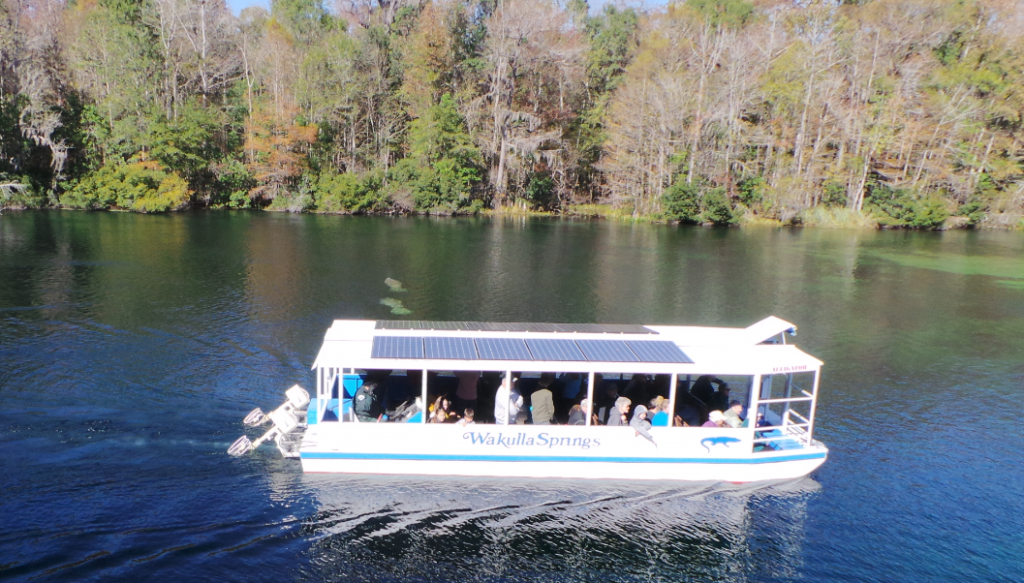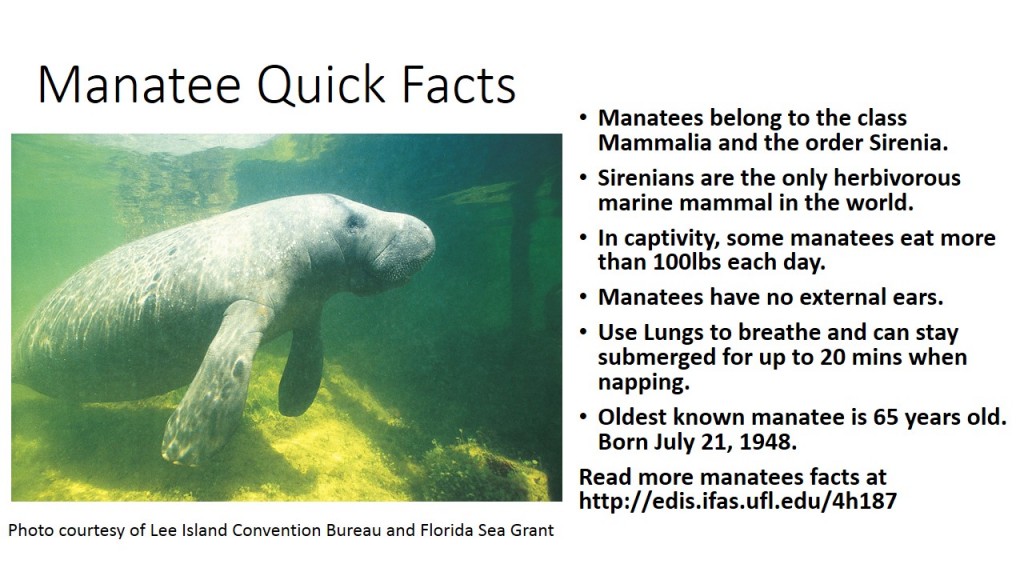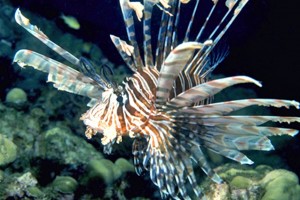by Scott Jackson | Nov 29, 2013
Check into the lodge at Wakulla Springs State park on a crisp cool evening and you are immediately greeted with the warmth of an open hearth fireplace and the security of stone walls radiating comfort and solace. These stately accommodations meet all your needs for refuge and rejuvenation with opportunities for an old fashion game of chess or checkers, great food, and time to reconnect with cherished friends and family.

Wakulla Springs Lodge offers guests warmth and rest from the winter’s cooler weather just like the springs offers manatees refuge on winter’s coldest days. (Photos by L. Scott Jackson)
Wakulla Springs hosts about 200,000 visitors each year and is one of North Florida’s most popular swimming spots with peak attendance between April and August. It’s a great place to beat the heat on a hot summer’s day. The same cool 250 million gallons of 69F degree water that provides welcome relief to visitors on hot summer’s day also provides an inviting warm refuge on winter’s coldest days to another type of park guest, manatees.
Wakulla Springs is the Gulf of Mexico’s northernmost geographic location where manatees congregate and consistently overwinter in large numbers. Last week, park guides estimated 30 individuals in the springs and river run.
Florida Fish and Wildlife Conservation and Commission / Florida Wildlife Research Institute’s winter synoptic aerial survey of Florida’s manatees in 2011 totaled 4,834 individuals. Improved survey techniques have resulted in increased estimates for Florida manatees in recent years, however, they still remain listed as endangered.

Daily river cruises on the Wakulla River are a great way to see manatees and other unique wildlife. (Photo by L. Scott Jackson)
Consistent water temperatures below 65F can result in stress, pneumonia, or colds in manatees. Other environmental conditions can also cause problems for manatees. This year, a large number of Florida manatee moralities have been reported as a result of a harmful algal bloom on the Atlantic Coast in the Indian River Lagoon. Florida manatees are also frequently struck by boat hulls and boat motor propellers; the signs of which are often seen in individuals with tell-tale propeller scars.
[youtube=http://www.youtube.com/watch?v=0D2tNXrQ5CI]
Education and stewardship are two of the best ways to help manatees. You can connect with these Florida ambassadors locally on a Wakulla Riverboat Tour at the State Park or through outfitters that provide kayaks and local guiding knowledge. Simple changes in home practices that protect water quality also protect the water resources used by manatees and other wildlife. Observing manatee protection zones and reducing boat speed also have been shown to reduce the impact of boating activities on manatees. To report sick or dead manatees, please call the FWC Wildlife Alert Hotline at 888-404-FWCC (3922).
Read more manatee facts in the following UF/IFAS publication: Life in the Sea.


by Rick O'Connor | Nov 22, 2013
It seems everyone in the Panhandle is talking about the invasive lionfish. This non-native member of the scorpionfish family was first seen in U.S. waters in 1989 near Ft. Lauderdale. Over the last two decades, much has been learned about the biology and potential impacts of lionfish in our waters; For additional background information you can read more at these websites http://myfwc.com/wildlifehabitats/nonnatives/marine-species/lionfish and http://escambia.ifas.ufl.edu/marine/2012/08/17/the-invasion-of-the-lionfish
This past October, the Florida Fish and Wildlife Conservation Commission held the first state lionfish summit in Cocoa Beach. Researchers, fishery managers, divers, fishermen, and the general public received research updates, discussed current issues, and provided input regarding future management needs. Here are a few of the interesting highlights from the summit.

Red Lionfish
Photo: Florida Sea Grant
What are the potential problems?
- Several theories on how lionfish were initial released into state waters have been suggested. However, research results now indicate a single introduction of lionfish in Florida initiated the invasion into the Western Atlantic presumably from just a few aquarium specimens.
- Sixty-thousand lionfish continue to be imported into the state each year.
- Compared to native Pacific population, Florida densities of lionfish are much higher; 400 fish/hectare in Florida compared to 80 fish/hectare in the Pacific. On average, invasive Atlantic Lionfish individuals are larger than the native populations in the Pacific basin.
- Studies from Pensacola showed that lionfish population has doubled annually since 2010 and lionfish densities are highest on artificial reefs.
- Invasive lionfish have no natural predators and may spawn 30,000 – 40,000 eggs every 2 to 4 days.
- Another potential problem reported are records of lionfish entering the Loxahatchee and Indian Rivers; indicating that they are able to move into brackish water.
What are the negative impacts?
Young lionfish feed primarily on crustaceans and when they are older they prey on reef fish. Research and stomach analysis indicate 70 different reef fish species as potential prey. Lobster fishermen in the Keys found lionfish are the leading by-catch species and have reduced lobster harvest by as much as 50%. Another study indicates lionfish on natural reefs they prefer blennies. However, on artificial reefs they feed on small snappers, sea bass, and groupers. Finally, an interesting study compared primary reef predators. Reefs with only grouper there was a 36% decrease of juvenile fish while reefs with lionfish the decrease was 94%.
What can be done?
Several reports indicate that collecting tournaments are effective; Lad Akins of Reef Environmental Education Foundation (www.reef.org) reported a 69% reduction of lionfish from one event in Key Largo. Another study had similar results but indicated that some spear fishermen were more successful than others, suggesting training may be required to increase efficiency.
Other reports indicate that work where native fish were introduced and conditioned to consume lionfish have led these native predators to follow and even bite divers thinking that “free food” may be available; it was suggested that this idea not be pursued.
Locally, lionfish rodeos sponsored by Emerald Coast Reef Association occur frequently in Okaloosa County. Escambia County Marine Resources hosted a pilot event this summer. Escambia will begin a full lionfish control program in 2014. If you have questions or comments, please contact your local UF/IFAS natural resource or Sea Grant Extension Agent.
Please note: UF/IFAS and Florida Sea Grant does not organize volunteers to participate in local lionfish control events; this is done by independent community groups. UF/IFAS and Florida Sea Grant provides this information about food safety concerns associated with eating lionfish. Click here for more information.





